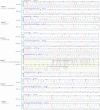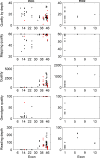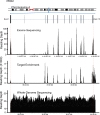PKD1 Duplicated regions limit clinical Utility of Whole Exome Sequencing for Genetic Diagnosis of Autosomal Dominant Polycystic Kidney Disease
- PMID: 30858458
- PMCID: PMC6412018
- DOI: 10.1038/s41598-019-40761-w
PKD1 Duplicated regions limit clinical Utility of Whole Exome Sequencing for Genetic Diagnosis of Autosomal Dominant Polycystic Kidney Disease
Abstract
Autosomal dominant polycystic kidney disease (ADPKD) is an inherited monogenic renal disease characterised by the accumulation of clusters of fluid-filled cysts in the kidneys and is caused by mutations in PKD1 or PKD2 genes. ADPKD genetic diagnosis is complicated by PKD1 pseudogenes located proximal to the original gene with a high degree of homology. The next generation sequencing (NGS) technology including whole exome sequencing (WES) and whole genome sequencing (WGS), is becoming more affordable and its use in the detection of ADPKD mutations for diagnostic and research purposes more widespread. However, how well does NGS technology compare with the Gold standard (Sanger sequencing) in the detection of ADPKD mutations? Is a question that remains to be answered. We have evaluated the efficacy of WES, WGS and targeted enrichment methodologies in detecting ADPKD mutations in the PKD1 and PKD2 genes in patients who were clinically evaluated by ultrasonography and renal function tests. Our results showed that WES detected PKD1 mutations in ADPKD patients with 50% sensitivity, as the reading depth and sequencing quality were low in the duplicated regions of PKD1 (exons 1-32) compared with those of WGS and target enrichment arrays. Our investigation highlights major limitations of WES in ADPKD genetic diagnosis. Enhancing reading depth, quality and sensitivity of WES in the PKD1 duplicated regions (exons 1-32) is crucial for its potential diagnostic or research applications.
Conflict of interest statement
The authors declare no competing interests.
Figures





References
Publication types
MeSH terms
Substances
Grants and funding
LinkOut - more resources
Full Text Sources
Medical
Miscellaneous

